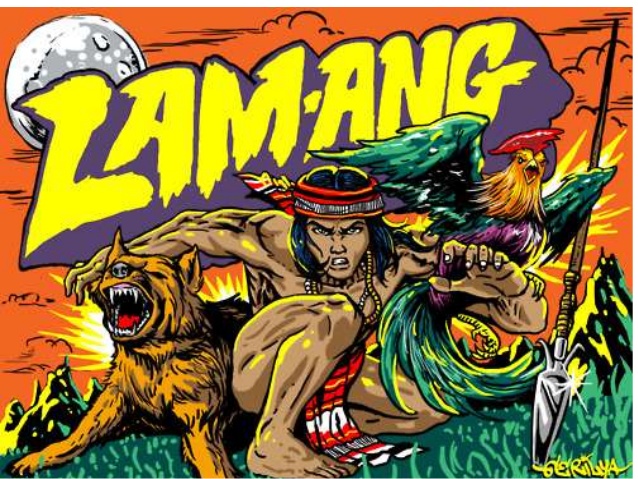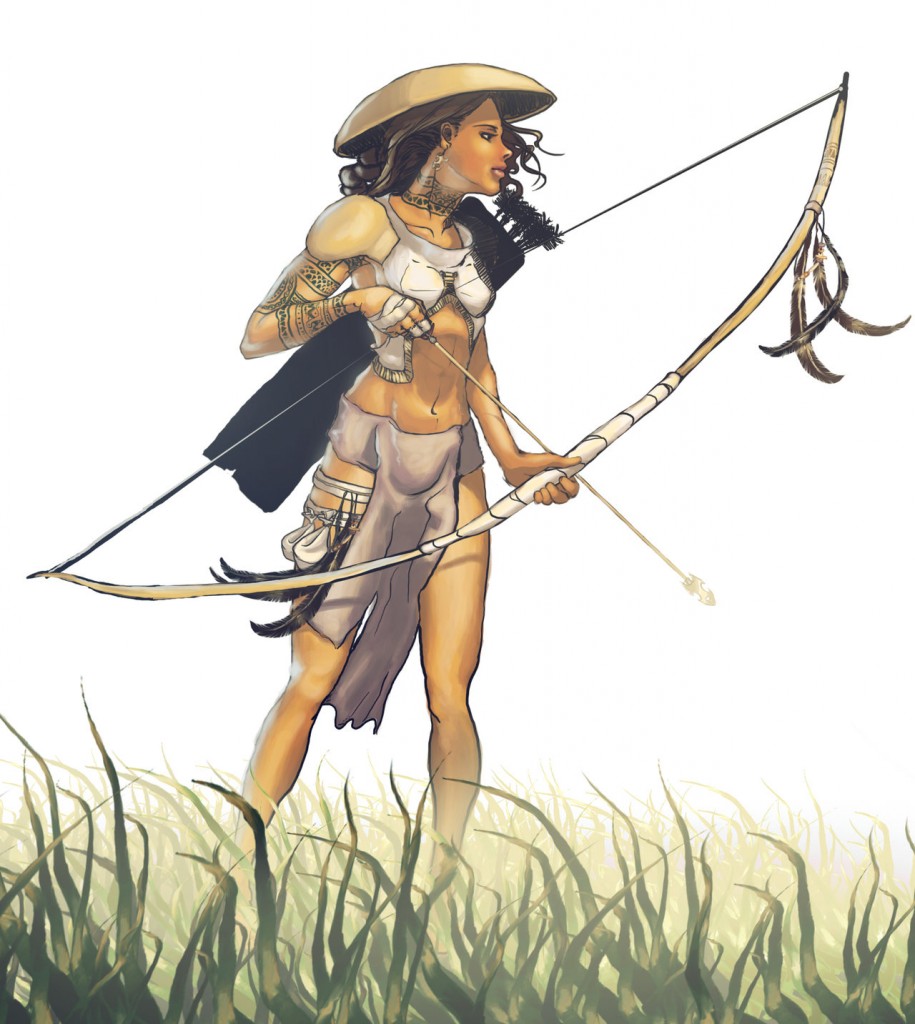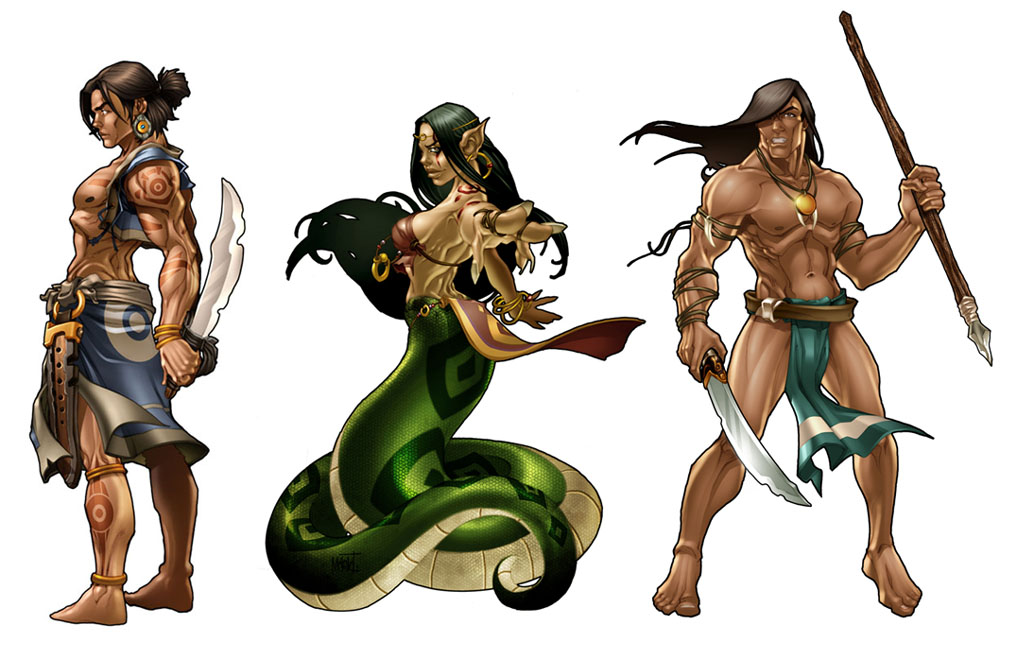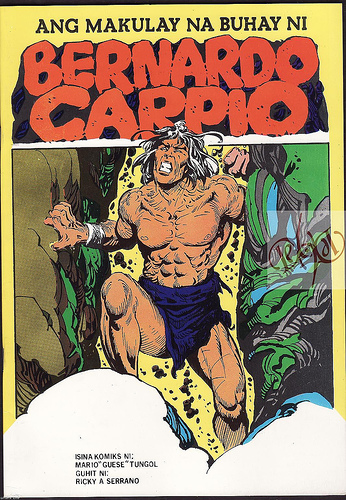
“ A hero ventures forth from the world of common day into regions of supernatural wonder: fabulous forces are there encountered and a decisive victory is won; the hero comes back from this mysterious adventure with the power to bestow boons on his fellow man.”
– Joseph Campbell, The Hero With A Thousand Faces
Heroes are individuals that always bring fascination to everyday ordinary people like us. Perhaps the reason why the idea of heroic figures or archetypes strike us so hard is because our ancestors created the original version of the stories. They spoke about adventures of ‘larger than life’ people who bring glory, honor, and pride to them through their remarkable deeds that are beyond the normal person’s capacity to achieve.
As I grew up and begun to get immersed in mythology, I began to wonder if the mighty Hercules from ancient Greece (known for his unparalleled strength), and other myth heroes had counterparts in our own folklore. As I looked back to the old tales of my roots, what I found was more than just counterparts of the heroes I fantasized about.
The Amazing Lam-Ang
One of the most interesting epic tales that I encountered during my elementary days is the Biag ni Lam-Ang (The Life of Lam-Ang) from the Ilocano people. It was passed down orally and then finally written by the blind Ilocano poet, Pedro Bucaneg. This tale narrates the quest of an extra ordinary man named Lam-Ang. The day he was born was already a prelude to the greatness he would achieve, for he could speak from the moment he came out of the womb.
The story unfolds as Lam-Ang embarks on a journey to find his missing father. He is joined by two magical companions; a rooster that can annihilate anything with it’s crow, and a dog that can restore anything with its bark. Interestingly, the power to destroy and restore are possessed mostly by deities in mythology. It made me think, what if Lam-Ang is actually an old god? Perhaps he simply carried the ‘god among men’ theme that is seen in many super hero stories and other fiction tales.
Later in the story, he found out that his father was slain by a rival tribe. He had seen his father’s decapitated head on a pole as the tribe’s men danced around it as if with mocking jubilation. The then nine month old Lam-Ang killed the entire tribe, sparing only one so that his deed will be spread across the land.
The story’s focus then shifts from avenging his father to winning the heart of the beautiful Ines Kannoyan. He is also resurrected by his animal companions after being killed by a water monster known as Berkakan. This highly magical tale , if stripped down, narrates a tale of a son who is longing for his father and will do anything to bring justice to those who disrespect those he loves.
Urduja, The Fighting Princess

According to the chronicles of Ibn Baṭūṭah, a renowned Muslim traveller, there are royal blooded woman from the Kingdom of Tawilisi (which is believed to be located in Pangasinan). During the pre-colonial age of the Philippines, they were highly adept in sword fighting and horse back riding. Due to a series of wars in the area, the male population had been depleted. Urduja took it upon herself to lead a group of all female warriors, known as the Kinalakian (similar to the Amazons of Greek Mythology). Princess Urduja was certainly not a ‘damsel in distress’.
Though gifted with beauty that made her admired by men, Urduja swore that she will never marry unless he could beat her in a fist fight. I found this part of Urduja tale similar to the Chinese fable about a woman named Yim Ming Chun. She also refused to be married and resorted to fighting the suitors instead. The tale was connected to the origin of the martial art called Wing Chun which was created by a Chinese Abbess, Ng Mui. As a result, I thought to myself, “Perhaps Urduja is the first to introduce the art of fist fighting in Philippines.” It doesn’t matter if Urduja actually existed or not, for her tales defy the stereotyping of women in society and are worthy of admiration – especially in a time where gender inequality and biases are still prevalent in our country.
Baltog, Handyong and Bantong: Monster Slayers

Epic tales often speak of how an unknown far flung land was cultivated and became prosperous through the actions of heroes. Commonly they would take up arms and accomplish tasks such as slaying monsters that ravaged the land. Monster therefore become a symbol of evil that prevented progress and goodness to reign. The Ibalon Epic, which was narrated by Kadunung from the province of Bicol, perfectly matched this kind of theme. Three heroes, Baltog, Handyong and Bantong find themselves entrenched in battles with mythical creatures in the region.
The trio managed to build their names as the pioneers of Ibalon by slaying these other worldly creatures. Including:
- The Tandayag Boar – who Baltog wrestled and broke its jaw using his bare hands.
- The shape shifting half woman-half snake, Oryol, that helps Handyong slay beasts in their land.
- A monster who goes by the name of Rabot that will later be killed by Bantong from a single blow with his bolo.
- Crocodiles the size of boats.
- Tiburon, a gigantic flying fish with saw like teeth which is said can crush rocks.
- Buring – a ferocious cyclops looking monster.
They also taught the people of Ibalon various agricultural techniques and crafts which made them ascend towards their “golden age”.
It seems that Baltog, Handyong and Bantong shared the same passion to protect and preserve the community they belong to, which encouraged them conquer all the adversaries that blocked the way towards progress.
Bernardo Carpio, The Earth Shaker

Legends say that Bernardo Carpio is a man (or a giant in some version) that is trapped between two colossal rocks in the mountain of Montalban. Older versions of the story say that he keeps both rocks from colliding into each other – which would cause catastrophic earthquakes. Other interpretations say this Filipino Hercules was trapped by the Spaniards during their colonization of the Philippines. The Spanish were aided by a local shaman to lure Bernardo Carpio inside a cave in Mount Montalban which consequently caused the two giant boulders to collide.
This leads to the continuation of the story that earthquakes are caused by Bernardo as he tries to free himself from the confines of the clashing rocks. It’s no coincidence that the place where the Bernardo Carpio tale originated is also the area where the West Valley Fault System is – a major fault line in the Philippines where most earthquakes occur.
According to Damiana Eugenio, author of Philippine Folk Literature: The Legends, Bernardo Carpio is heralded as the savior of Filipinos against ‘national enslavement and oppression’. In that version, when he finally breaks the chains that bind him to the rocks, Filipinos will live in happiness and freedom. The prophetic side of Bernardo’s tale was historically associated to the oppression from colonizers in the Philippines. These days, it would be more connected to the idea of being freed from national poverty. In all versions, he is an empowering allegorical character.
Heroes That Are Worth Remembering
There are lots of myth stories with heroes that need to be told (and retold) to the youth. The story of Indarapata and Sulayman, Aliguyon, the magic bolo wielder and the ‘Ayuding’ player, Lumalindaw, and even the ‘romantic’ saga of the demi-gods Labaw Dangon, Humadapnon and Dumalapdap from the Hinilawod (Tales from Halawod River) – to name a few.
These tales might lack the colorful imagery of superheroes in fanciful costumes, but the lessons they can impart to everyone is valuable today as it was when they were first created. To love your roots and imitate the lessons and values of such bravery, wisdom and love could eventually make us, the common man, a ‘hero’ in our own way. These are the ‘boons’ that the mythical heroes of our ancestors wanted us to accept and continue to pass on, so that the fire of ‘heroism’ will keep on burning until the end of time. And thus, these tales of heroism from our past become immortal.
Currently collecting books (fiction and non-fiction) involving Philippine mythology and folklore. His favorite lower mythological creature is the Bakunawa because he too is curious what the moon or sun taste like.


